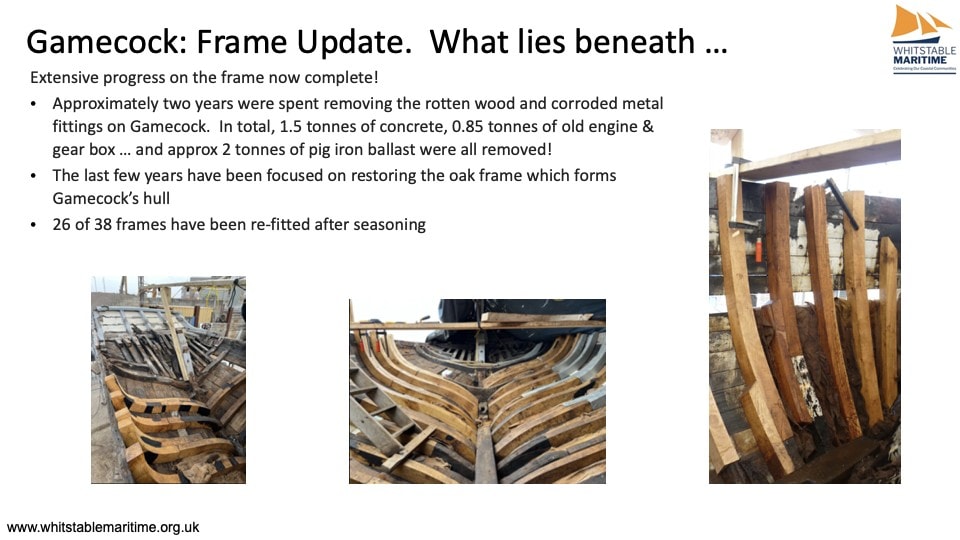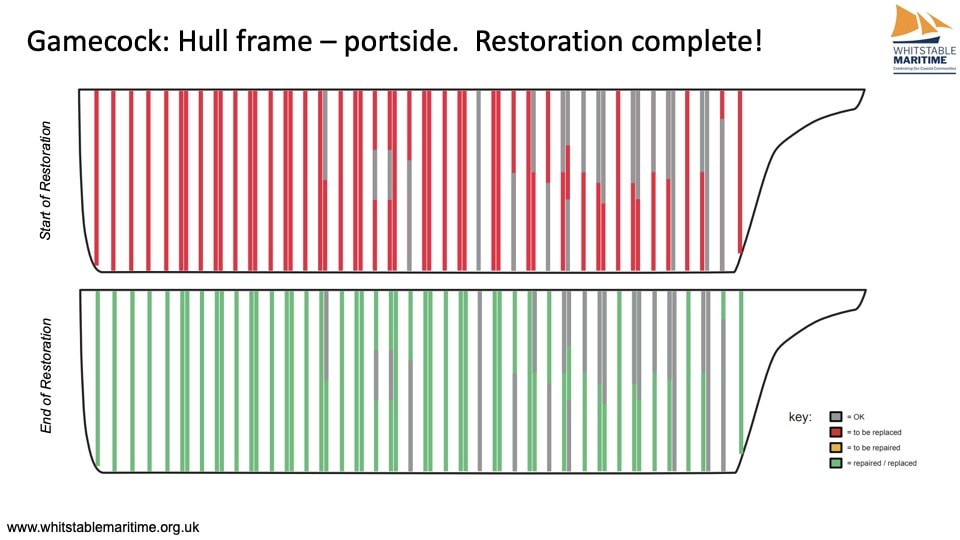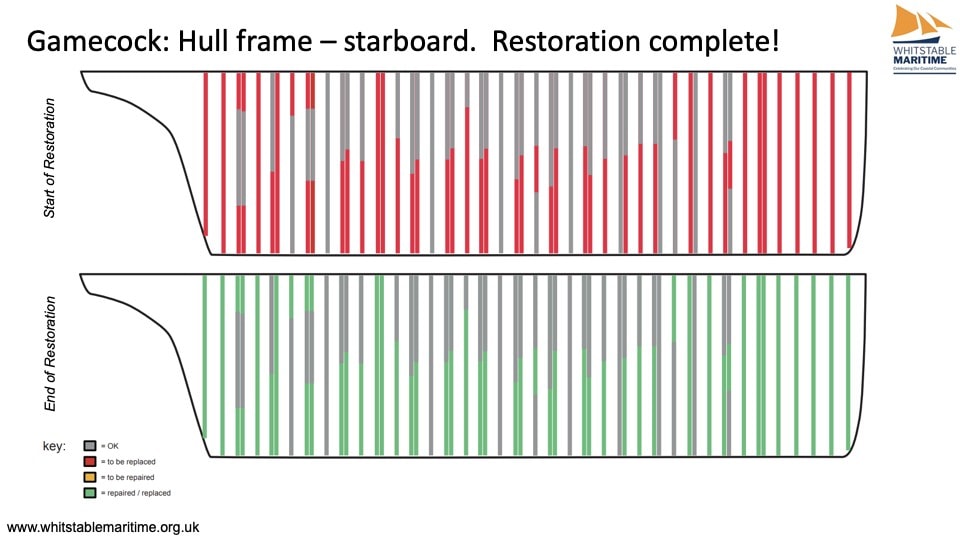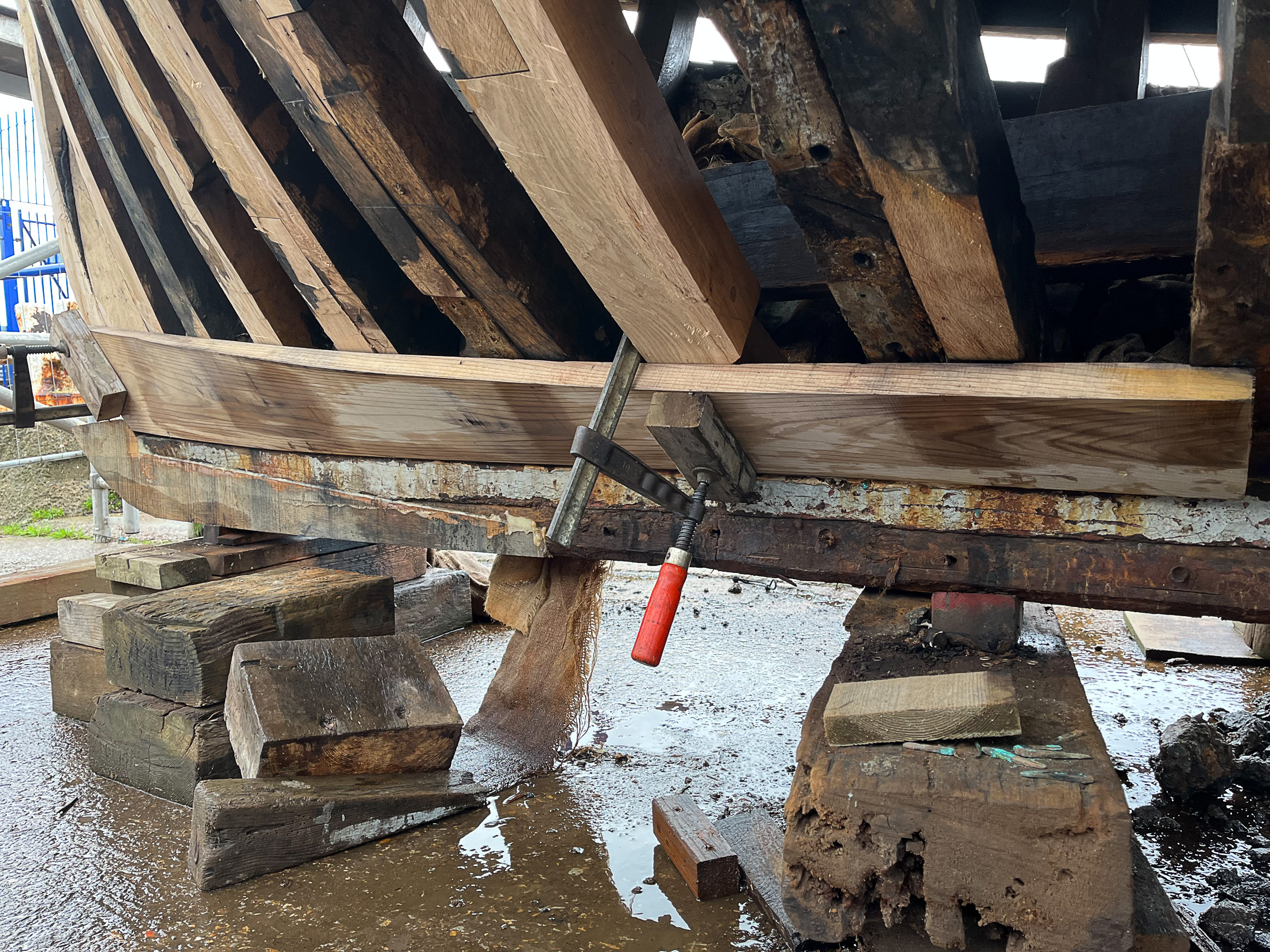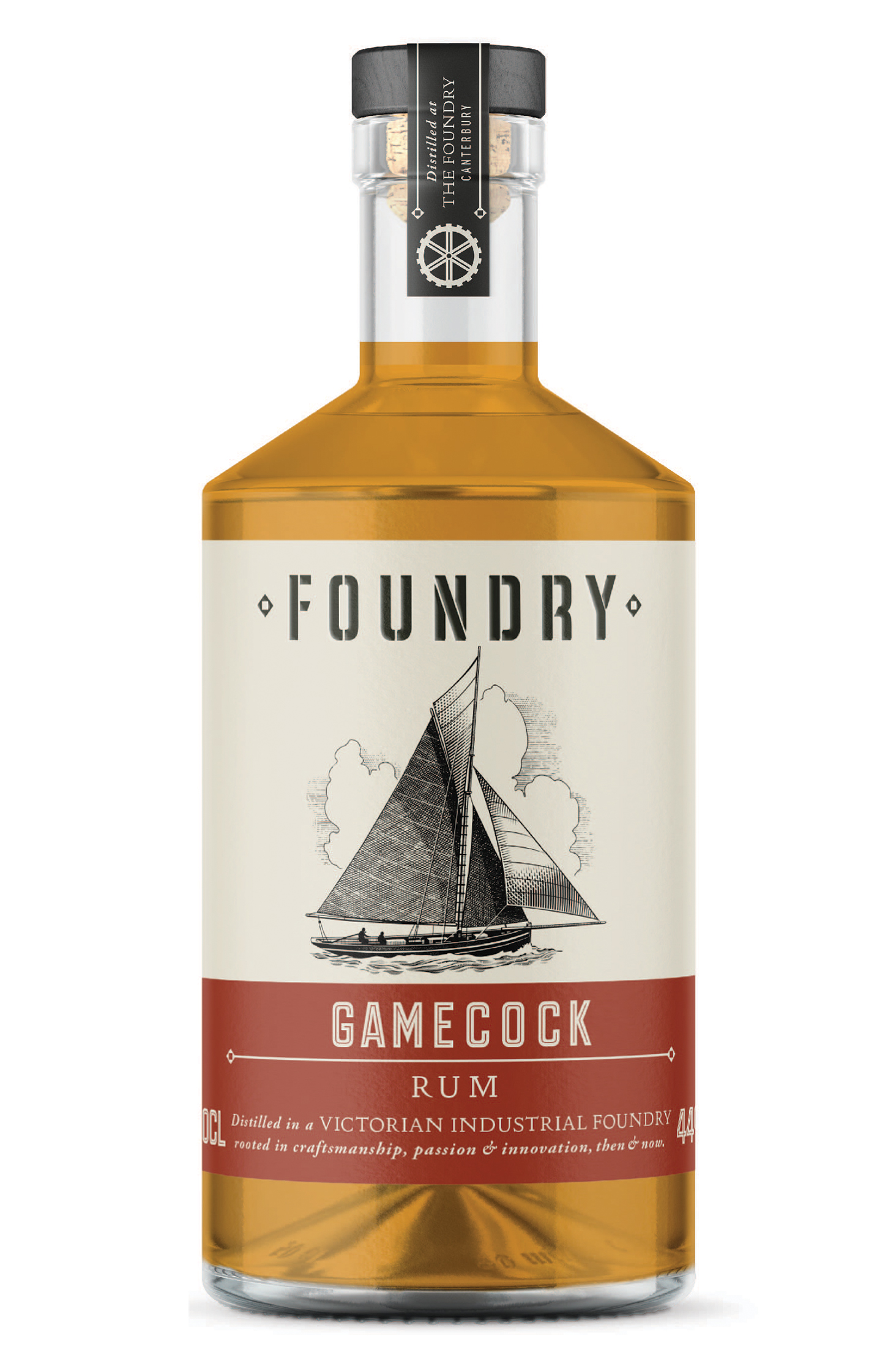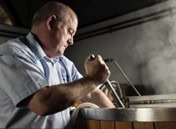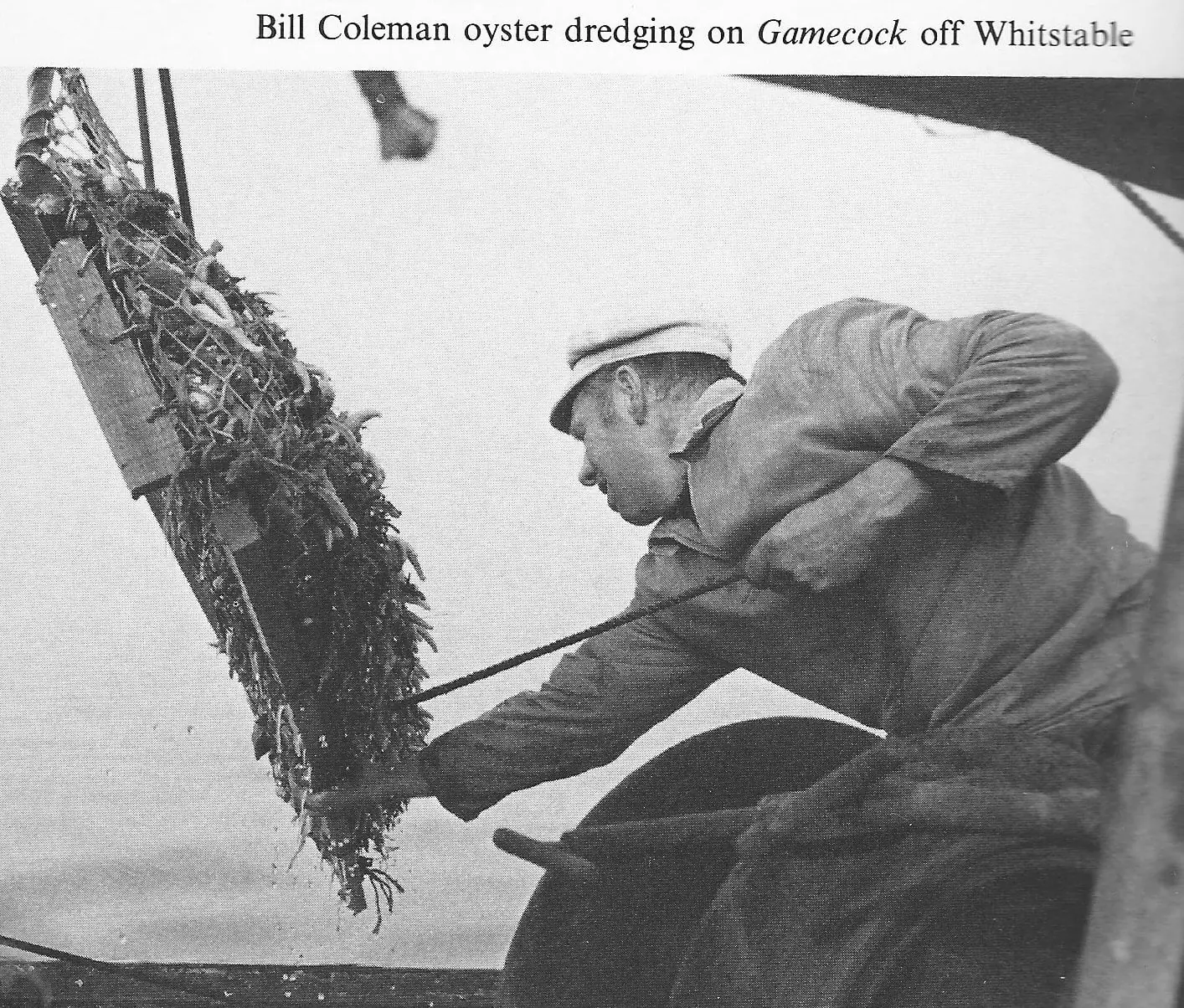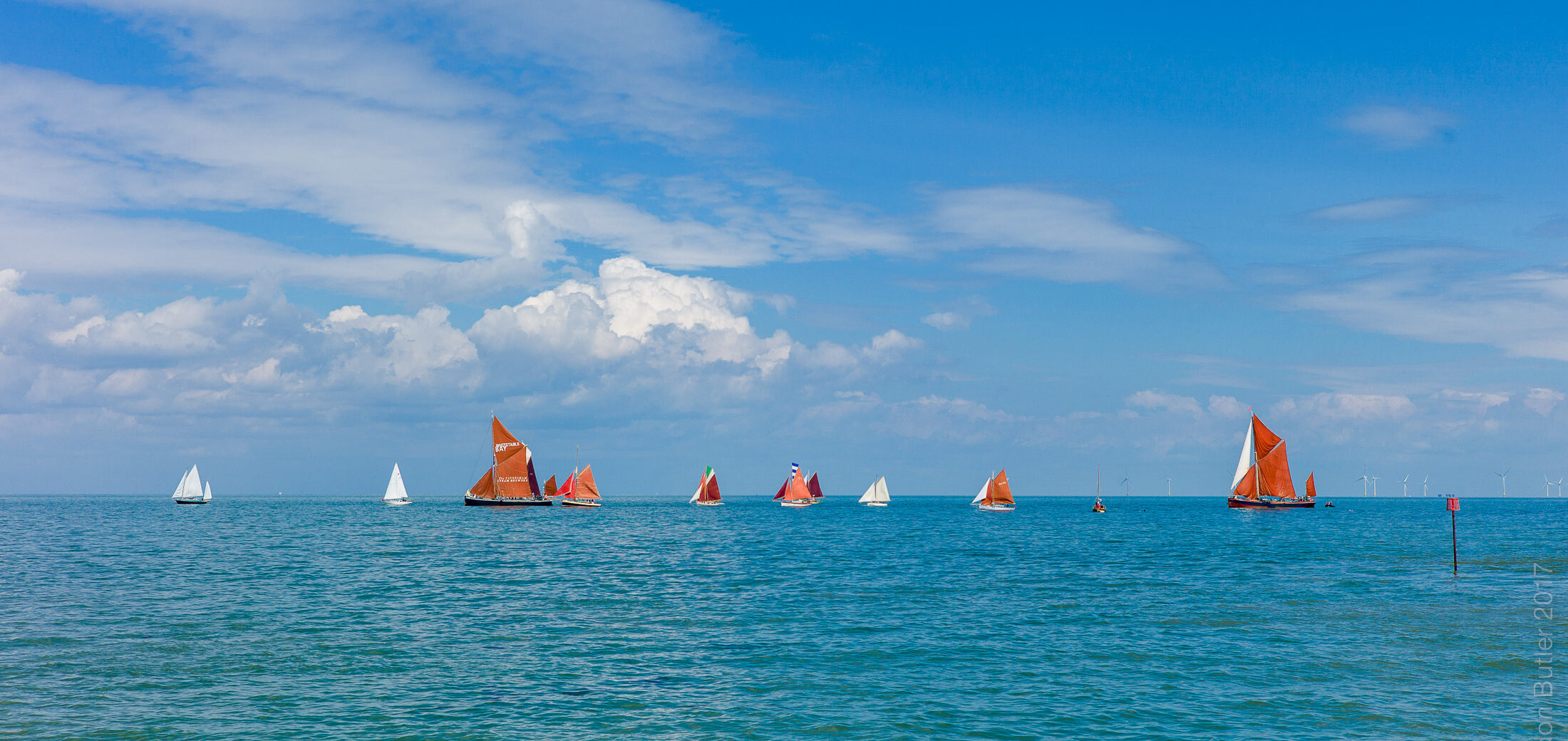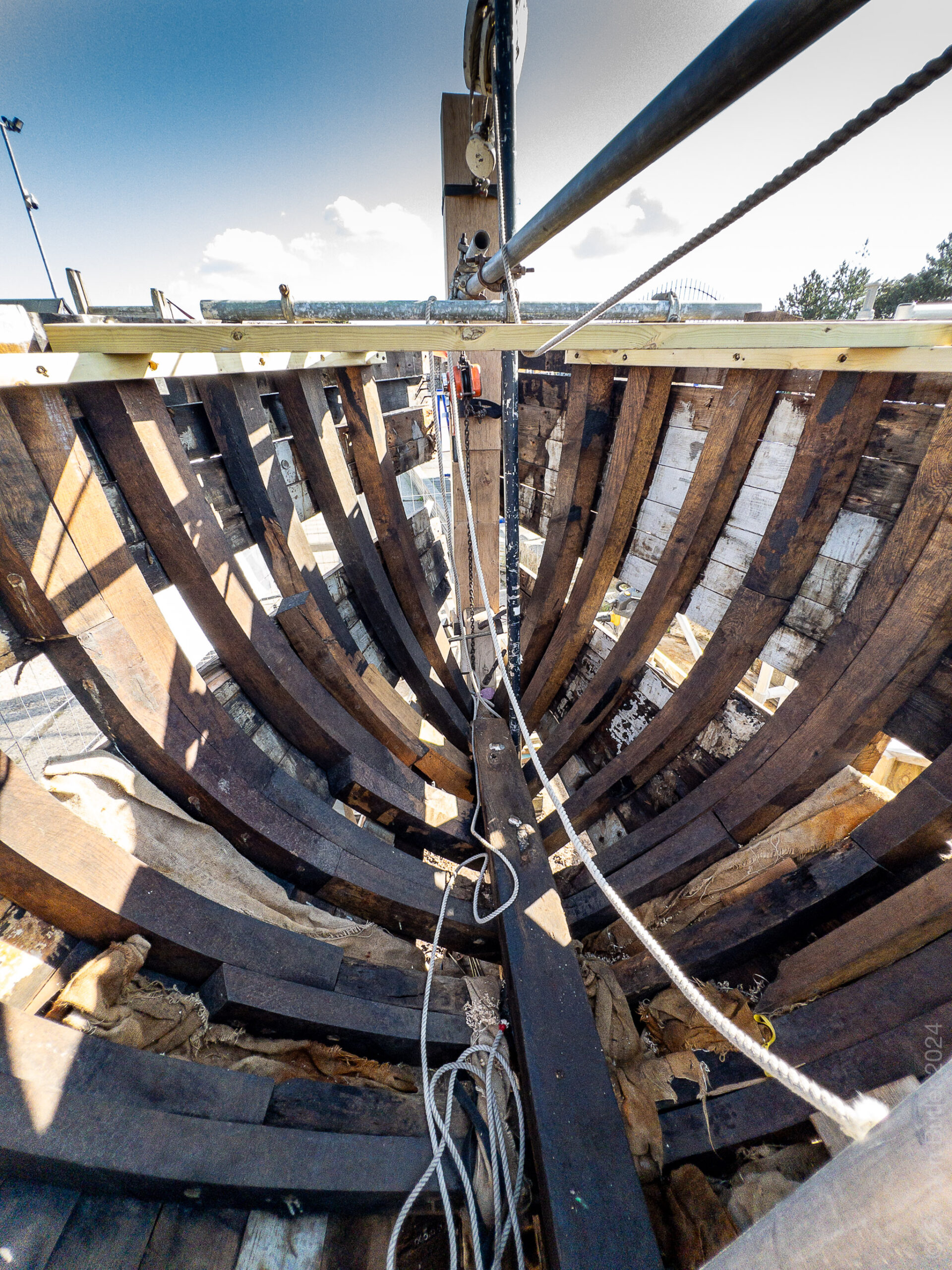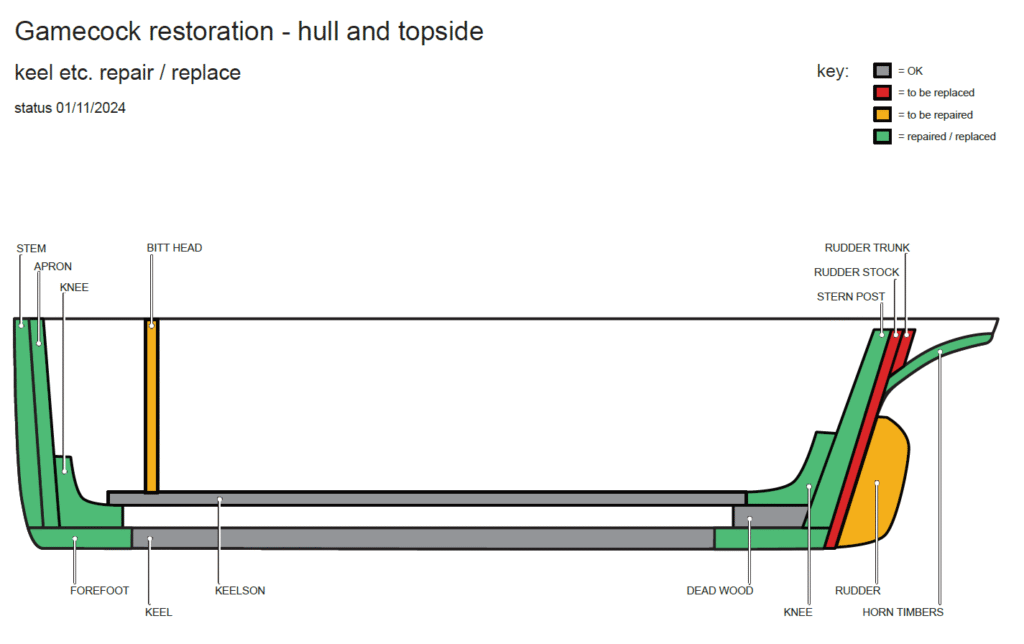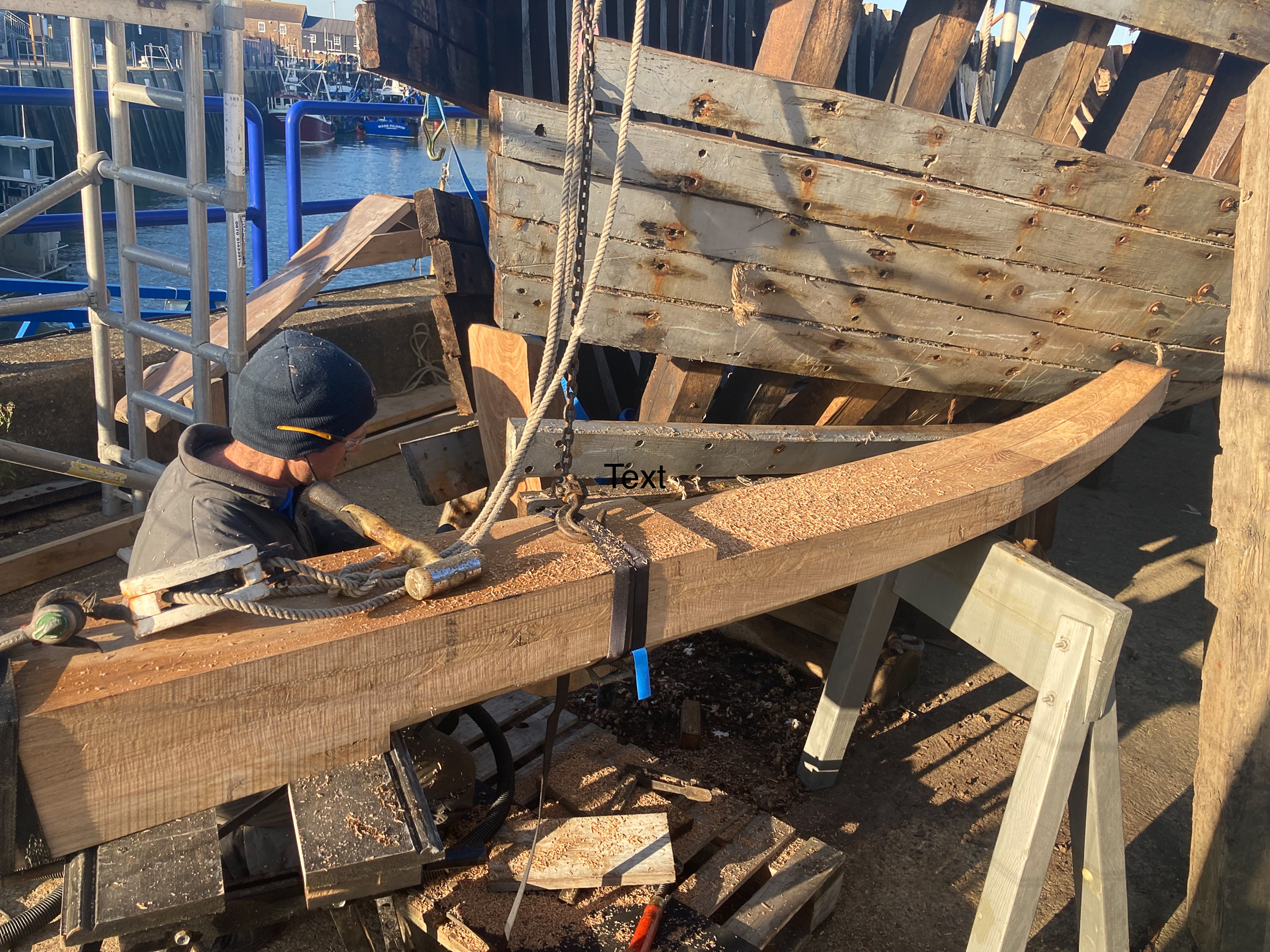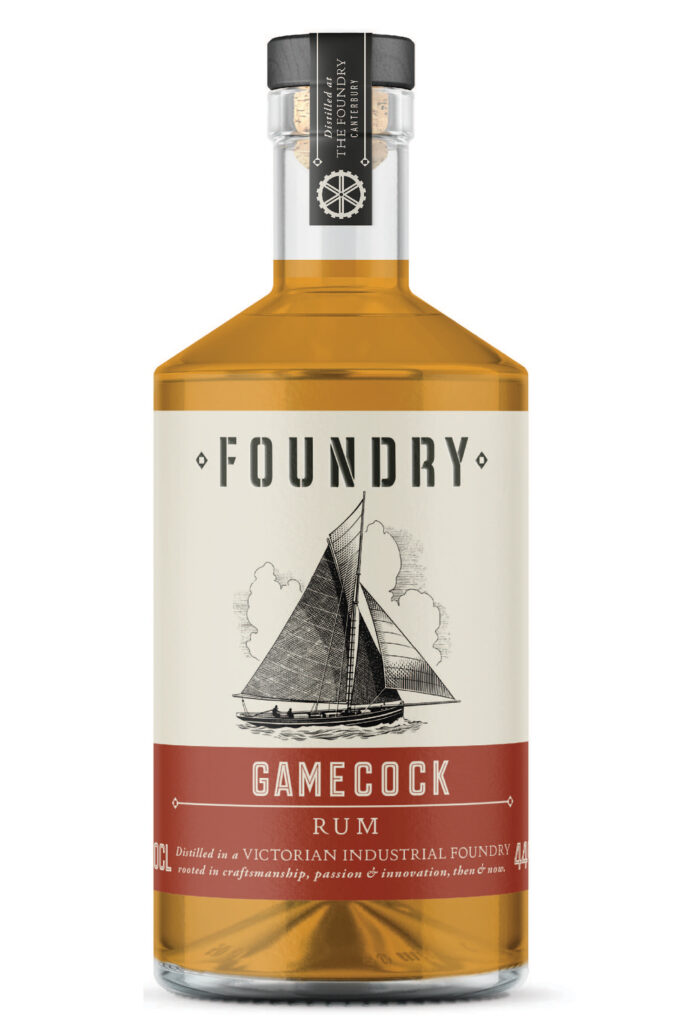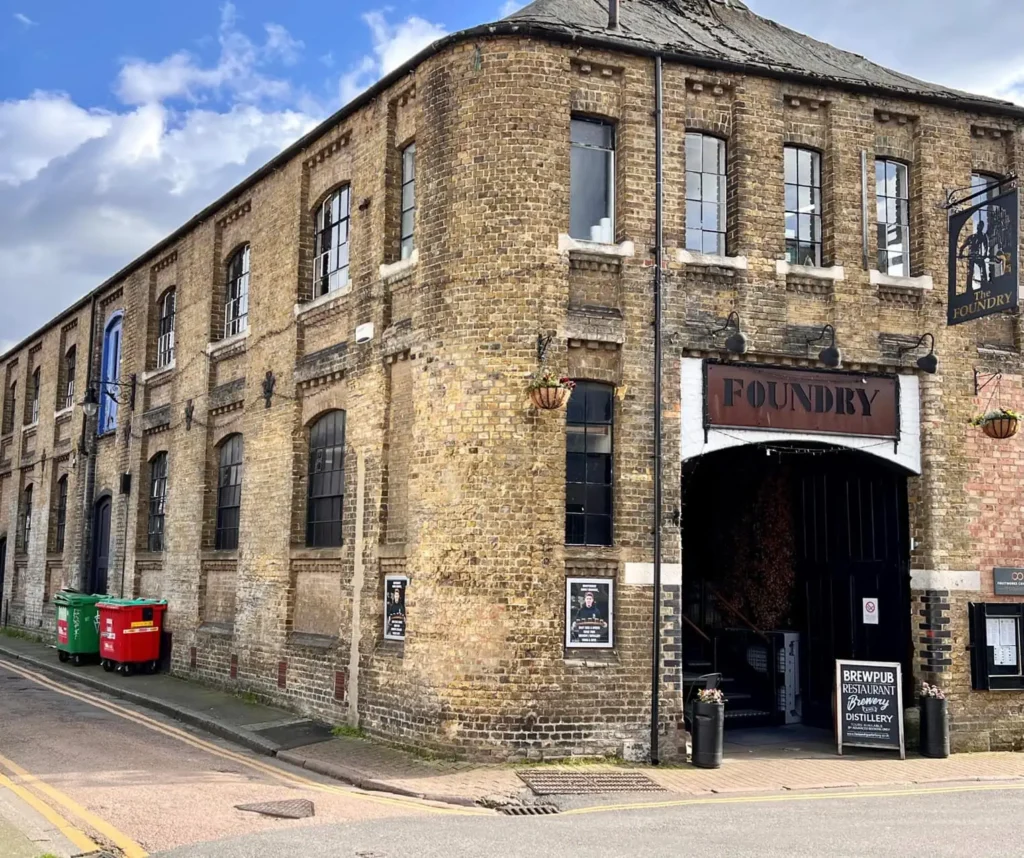2024 has been a very active year for Whitstable Maritime, not just regarding restoration of the Gamecock, but also the continued popularity of the 5km Coastal Trail and the growing partnership with the Marine Conservation Society and Kent Wildlife Trust. Such partnerships are critical as this enables the Charity to drive towards our objectives.
Here is a summary from Whitstable Maritime’s AGM held on 12 Nov 2024
Activities and public benefit
Whitstable Maritime exists to help residents, visitors, schoolchildren and students enjoy learning about the town’s connections with the sea, past, present and future.
The first heritage boat being restored is the last surviving oyster yawl built in Whitstable (1906) which is still in its original form. Known as the Gamecock, it has been registered as a National Historic Ship, is recognized as having historical significance and has strong connections with the local community. The oak frame forming the hull of the local Oyster Yawl has had extensive work. Work has been focused on the port side internal framing. 26 of 38 frames have been re-fitted after seasoning. The strength testing of trunnels was started, generating some excellent results and data.
The 5K Coastal Trail opened in 2020 provides a platform for related activities along the coast. The 5K Coastal Trail is incredibly popular with locals and visitors alike and is increasing used as an option within social prescribing. The Coastal Trail has something of interest for everyone and features eight places of interest for walkers, cyclists and push-chair users, with some sections having full accessibility. It was created by local Volunteers with a knowledge of geology, flora and fauna, history and archaeology. And it is free. 11,000 printed copies of The Trail are distributed through a number of retailers in the town and an on-line version is available on the Charity’s website: https://whitstablemaritime.org.uk
Whitstable Maritime is closely connected with the Kent Wildlife Trust, the Kent Ornithological Society and the Marine Conservation Society. Promoting the importance of protecting the importance and fragile local environment. the focus is to grow pride in the local area through sharing information on local marine historic environment, man’s impact and what can be done to save and protect.
Reserves Policy & Ongoing Concern:
Whitstable Maritime has successfully secured a number of grants to ensure restoration work could continue on the Gamecock for at least 12 months. The 5K Coastal Trail remains self-funding with the cost of design and print being adequately covered by local sponsorship and advertisements. Additional income to cover general running costs are derived from associated activities that Add Value, for example, the sale of branded merchandise and local fund raising activities. The Whitstable Oyster Yawl, Gamecock, has been professionally valued at £85,000 when fully restored and the quality of the work has led to projections of a second ‘working life’ of 60/80 years.
An underlying weakness is the Charity’s reliance on Volunteers. This secures a close association with the Community and helps with fund-raising. Whilst the number of volunteers has been increased, it remains challenging to find competent Volunteers who retain their support over several years. Concerns, such as the shortage of timber and other materials are more difficult to manage.
Plans for the Future:
The work of Whitstable Maritime remains well supported both locally and regionally. The financial feasibility of the project is more obvious.
From a financial perspective, the main cost remains the Gamecock restoration. 2024 saw a dedicated fund-raising campaign which is focused on securing multi-year funding in order to complete all restoration work. The coastal trail remains extremely popular with an update and larger print-run planned for 2024. Work continues to develop an interactive version and the Coastal trail remains self-funding. The environmental focus will be expanded, given support and partnership with the Marine Conservation Society, Kent Wildlife Trust and Kent Ornithological Society.
Intern programmes and student work experiences will continue and be expanded in 2025. A comprehensive Whitstable Maritine Social Media campaign will be developed to enable a broader range of the community to engage and be aware of the charity’s activities.
Whitstable Maritime will be making a substantial contribution to the revival in 2025 of an annual Maritime Show that celebrates the town’s connections with the sea, past, present and future.
